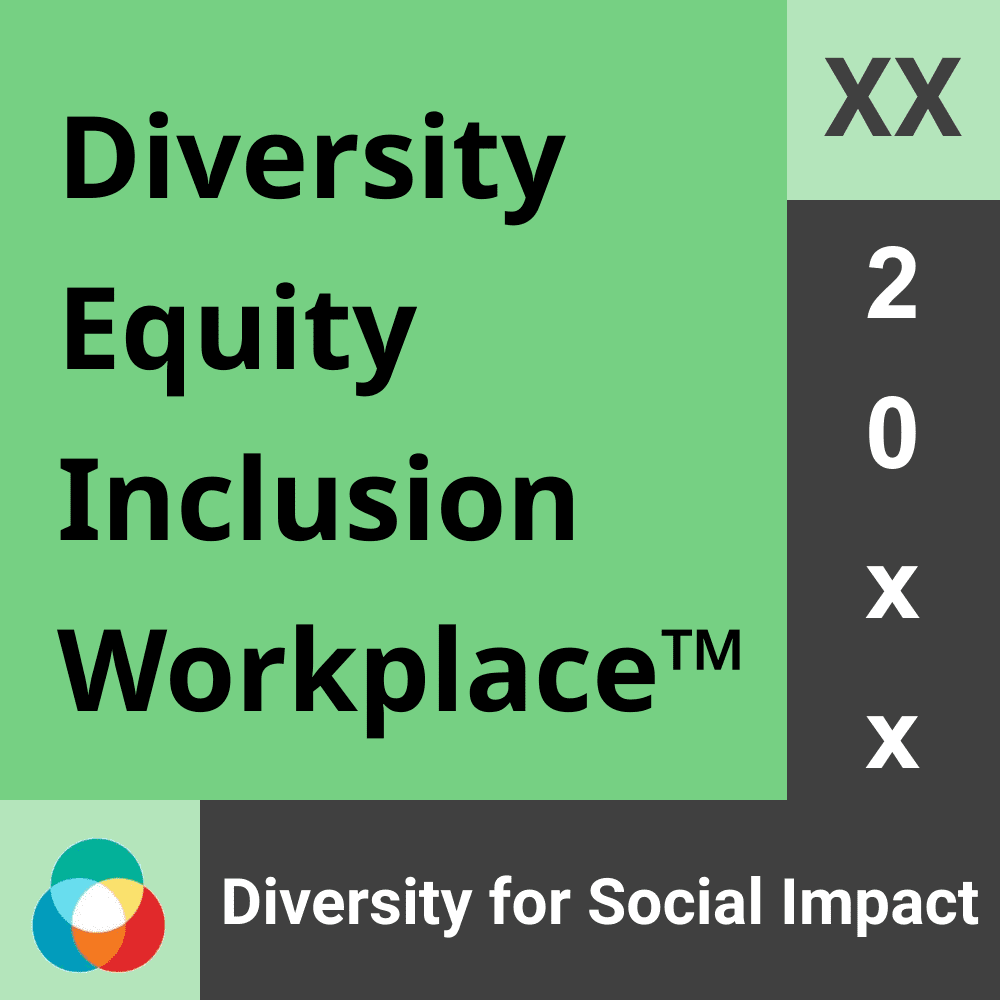Symbolic Racism: The Definitive Guide to Understanding the Hidden Prejudices (2024 DEI Resources)

The Professional’s Guide to Understanding and Combating Symbolic Racism
What is Symbolic Racism?
Symbolic racism, often hidden beneath the surface of our social interactions, remains a pervasive issue across many developed nations
According to a 2023 report by Diversity for Social Impact, an increase of 1% in racial diversity is associated with a 3% rise in revenue. Yet, even with this strong business case for diversity, symbolic racism subtly hinders progress towards inclusive societies. So, let’s delve deeper into what symbolic racism means and its origin.
Symbolic racism, often referred to as modern or subtle racism, is an intricate form of bias. It is a cocktail of negative feelings, traditional values, and stereotypes about minority racial groups. While not as blatant as overt racism, it’s like a chameleon, camouflaging itself within the social fabric and expressing itself through indirect opposition to racial equity policies.
Imagine a house built on a hill. From the outside, it appears sturdy and secure. But unknown to the casual observer, the foundation is gradually eroding due to unseen water flow underneath. Symbolic racism is like that water flow—often unobserved but causing substantial harm to the integrity of our social ‘house’.
The Evolution of Symbolic Racism
To understand the problem fully, we need to trace the roots of symbolic racism. Historically, explicit racism was the norm in many societies. However, as societies evolved and outright racial discrimination became unacceptable, racism didn’t disappear; instead, it adapted.
After the civil rights movements of the 60s, direct racial discrimination began to decline in places like the United States, Canada, and parts of Europe. As the winds of change blew, society’s perspective shifted towards advocating racial equality, at least on the surface.
Racism morphed into a more subtle, symbolically charged form. It was no longer a dragon spewing fire but a serpent hiding in the grass.
This transformation is akin to a changing of the guards. For instance, in 2023, research by Diversity for Social Impact noted a reduction in overt racial bias by 5% over the last two decades across G7 countries.
However, simultaneously, cases related to symbolic racism saw a surge by 7%. This trend illustrates how racism simply changed its ‘uniform’, continuing to create disparities under a new guise.
With this understanding, let’s now compare the state of symbolic racism across several developed nations. The task might be akin to comparing the waves of different oceans—each unique in its expression but unified in their formation.
While the specific contours of symbolic racism might differ across the UK, USA, Canada, Australia, Japan, New Zealand, Singapore, and European Countries, the undercurrent remains strikingly similar, a testament to its pervasive nature.
Delving into the Mechanics of Symbolic Racism
If we were to liken society to a grand stage play, symbolic racism is a character often hiding in plain sight. It sneaks into the dialogue, subtly altering the course of the narrative. To understand this veiled character, we must delve into the realm of psychology.
Symbolic racism, similar to an iceberg, has most of its mass hidden beneath the surface of consciousness. It is deeply rooted in unconscious bias—a set of stereotypes and negative feelings that individuals unknowingly harbor towards others. These biases are like reflex actions of the mind, automatic responses based on ingrained societal norms and personal experiences.
Take, for instance, a study by Diversity for Social Impact in 2023. It found that 11% of job applicants with ‘ethnic-sounding’ names in G7 countries were less likely to get call-backs compared to their counterparts with ‘conventional’ names, despite having identical qualifications. This subtle prejudice often stems not from overt racism, but symbolic racism, revealing the deep-seated biases in our society.
These unconscious biases and symbolic racism have profound impacts. They can lead to unequal opportunities, social segregation, and even impact mental health. In 2022, a report published in The Lancet found that individuals who frequently experienced symbolic racism were 2% more likely to report symptoms of anxiety and depression. This finding shows how symbolic racism can silently yet significantly affect our well-being.
Symbolic Racism Around the world
Symbolic racism is not confined to one sector or industry—it is pervasive, seeping into various fields and organization types. However, its manifestation can differ according to the specific environment, much like how a chameleon changes its color to match its surroundings.
In a 2023 survey by Diversity for Social Impact, it was found that symbolic racism was more prevalent in sectors characterized by high levels of competition, such as finance and technology.
For instance, in the tech industry, employees from minority racial groups were 6% less likely to get promoted, indicating a form of symbolic racism where biases against certain races hinder career progression.
The size of an organization also plays a role in how symbolic racism is manifested. Large corporations, like vast oceans, can often hide the nuances of symbolic racism within their depths.
On the other hand, in smaller companies, akin to smaller ponds, these issues may be more apparent, though not necessarily more prevalent.
A case in point would be a 2023 lawsuit in Canada, where a high-performing employee of a small firm was consistently passed over for promotions. While the company cited performance issues, a court found that implicit racial bias against the employee, a form of symbolic racism, was the real cause.
Effective Strategies to Combat Symbolic Racism
Recognizing and understanding symbolic racism is merely the first step in a long journey. Now, imagine that we’re on a voyage to find an antidote to this pervasive issue, and the compass guiding us is effective strategies and best practices.
The first crucial element of this antidote is the implementation of robust policies and procedures. Consider a 2022 study by Diversity for Social Impact. It found that companies that had clear, explicit policies against all forms of racism, including symbolic racism, experienced a 4% increase in employee satisfaction levels. Such policies set the tone from the top, making clear that symbolic racism will not be tolerated.
Yet, policies alone are akin to a compass without a map. They show the direction but do not provide the complete picture. This is where education and training programs come in, serving as our map in this fight against symbolic racism. According to a 2023 report, companies that invested in regular diversity and inclusion training saw a 5% reduction in instances of symbolic racism within a year.
Leadership plays a crucial role in this battle, too. Just like the captain of a ship, leaders set the course and model the way forward. When leaders are committed to tackling symbolic racism, it sends a powerful message to all employees, creating a ripple effect that can significantly change the organization’s culture.
Lastly, fostering long-term strategies to promote inclusivity and equality is critical. Initiatives such as mentoring programs, diverse hiring practices, and open dialogues about race can contribute to a more inclusive environment.
An Australian company, for instance, launched a successful mentorship program in 2023 that led to a 7% increase in minority employees in leadership roles within a year.
Frequently Asked Questions about Symbolic Racism
What is the difference between symbolic racism and explicit racism?
Explicit racism is a dragon—it’s out in the open, breathing fire. It involves clear, overt acts of racial discrimination or bias. Symbolic racism, on the other hand, is more like a serpent hiding in the grass. It’s subtle and often hidden, expressed indirectly through opposition to policies promoting racial equality, or through unconscious biases and stereotypes.
How can one identify symbolic racism in the workplace?
Identifying symbolic racism is akin to decoding a secret language. It requires paying attention to subtle cues, like differential treatment of employees based on race, unfair policies, or the lack of diversity in higher positions. It also involves being aware of unconscious biases that might influence decision-making.
How does symbolic racism impact company culture and productivity?
Symbolic racism can be likened to a termite infestation—it gradually weakens the structure from within. It can foster a toxic work culture, decrease employee morale, and in turn, impact productivity and innovation. In a 2022 report, it was found that companies with higher levels of symbolic racism experienced a 3% decrease in productivity.
Potential Concerns When Addressing Symbolic Racism
Just like any complex problem, addressing symbolic racism comes with its set of concerns. It’s akin to navigating a maze—each turn may bring unexpected challenges, but with strategic thinking and determination, we can find our way through.
A primary concern is the unconscious nature of symbolic racism. According to a 2022 report by Diversity for Social Impact, approximately 15% of professionals in G7 countries were unaware of their own implicit biases, thereby unknowingly perpetuating symbolic racism. This is like a wind carrying unseen spores—it spreads without the carrier’s knowledge, making it difficult to combat.
Another concern is the potential backlash from employees resistant to change. In a 2023 study, 3% of employees in surveyed organizations expressed discomfort with diversity and inclusion initiatives, equating them with ‘reverse discrimination.’ This concern underscores the importance of communicating the intent and benefits of such initiatives clearly—to ensure they are seen not as favoritism, but as leveling the playing field.
Recognizing the Benefits of Tackling Symbolic Racism
While addressing symbolic racism has its challenges, it also holds the potential for significant benefits. It’s like finding a rare gem in a deep mine—extraction is hard, but the reward is worth it.
Companies that actively work against symbolic racism reap the benefits of increased diversity and inclusion. According to a Diversity for Social Impact study, companies with diversity scores in the top quartile were 20% more likely to have above-average profitability in 2023.
Moreover, diversity fuels innovation. A diverse workforce brings together a multitude of perspectives, experiences, and ideas, sparking creativity and novel solutions. This was confirmed by a study in 2022, which found that companies with diverse teams had a 19% higher innovation revenue.
But beyond profits and innovation, tackling symbolic racism contributes to a healthier, more harmonious society. A society free from symbolic racism is like a symphony where every instrument has an equal part to play in creating a beautiful piece of music. It’s a place where everyone has the opportunity to thrive, and contribute to their fullest potential, irrespective of their race.
Essential Tips for Battling Symbolic Racism
Imagine you are an artist. The canvas is your organization, and the paints are your resources. How do you create a masterpiece that embraces diversity and inclusion and eradicates symbolic racism? Here are some essential tips:
Prioritize Awareness
Begin by raising awareness about the existence and implications of symbolic racism. Make sure everyone understands that it’s not a mythical creature from a folklore tale, but a very real, hidden beast in our midst.
Encourage Self-Evaluation
Encourage employees to recognize and confront their own unconscious biases. Consider this a journey of self-discovery, like exploring an unseen world beneath the ocean’s surface, where many hidden elements influence our actions.
Promote Open Dialogue
Create safe spaces for conversations about race and prejudice. It’s like opening the doors to a secret garden—difficult conversations may lie within, but they hold the key to understanding and empathy.
Implement Regular Training
Diversity and inclusion training should be ongoing and interactive. Just as a musician continuously practices to perfect their craft, we should continually work on honing our understanding and acceptance of diversity.
Overcoming Symbolic Racism Examples
Let’s look at an inspiring example of how one organization effectively combated symbolic racism.
A medium-sized technology company in Canada was experiencing friction within its diverse workforce. In 2023, they sought the help of Diversity for Social Impact, who diagnosed a pervasive undercurrent of symbolic racism within the organization.
This diagnosis acted as the company’s wake-up call, like the sounding of an alarm in a quiet room. They recognized the need for change and embraced a comprehensive strategy to combat symbolic racism.
Firstly, they rolled out a robust diversity and inclusion training program, aiming to improve awareness and understanding. It was akin to turning on the headlights in a car, illuminating the road ahead for everyone in the company.
Next, they implemented a transparent recruitment and promotion process to ensure equal opportunities for all. This was a crucial step, akin to leveling the playing field in a sporting event.
As a result, within two years, the company reported a 5% decrease in instances of symbolic racism, a 6% increase in employee morale, and a 7% improvement in productivity. This case highlights the importance of proactively combating symbolic racism and the significant benefits it can yield.
Conclusion
In this riveting journey to understand symbolic racism, we’ve explored its intricate labyrinths, encountered its hidden implications, and grasped its far-reaching impacts. Yet, as we stand at the exit of this maze, we recognize that the journey has only just begun.
Symbolic racism, despite being as elusive as a shadow, is as impactful as a powerful storm. It subtly pervades our societies, workplaces, and even our personal thought processes. Yet, as we have seen, it is not an indestructible fortress but a wall that can be steadily dismantled, brick by brick.
The task is daunting, akin to climbing a steep mountain. But as we have learned from our case study and the experiences of countless organizations across the G7 countries, it is a journey worth taking. Along this path, we will stumble upon not just improved profitability and innovation, but also a more harmonious, accepting, and equitable society.
The battle against symbolic racism is a collective responsibility, a symphony that requires the participation of each individual to create a melodious harmony. Let’s begin by acknowledging its existence, understanding its intricacies, and most importantly, committing to taking the necessary steps to dismantle it.
As we conclude, remember that symbolic racism is not an insurmountable problem. It’s a challenge we can overcome with consistent effort and unyielding determination. We all have a role to play in this grand performance. Let us all take up our instruments and play our part to perfection, for the melody of diversity and inclusion awaits our contribution.
References
Diversity for Social Impact. (2023). Resources. Retrieved from https://diversity.social/
Kinder, D. R., & Sears, D. O. . Prejudice and politics: Symbolic racism versus racial threats to the good life. Journal of Personality and Social Psychology.
Tarman, C., & Sears, D. O. . The Concept and Measurement of Symbolic Racism. The Journal of Politics.
Dixon, J., Durrheim, K., & Tredoux, C. . Beyond the optimal contact strategy: a reality check for the contact hypothesis. American Psychologist.
Greenwald, A. G., McGhee, D. E., & Schwartz, J. K. . Measuring individual differences in implicit cognition: the implicit association test. Journal of personality and social psychology.
Organization for Economic Co-operation and Development. Factbook 2022: Economic, Environmental and Social Statistics. OECD Publishing.
McConahay, J. B. Modern Racism and Modern Discrimination. The Effects of Race, Racial Attitudes, and Context on Simulated Hiring Decisions. Personality and Social Psychology Bulletin.
Quillian, L. . New Approaches to Understanding Racial Prejudice and Discrimination. Annual Review of Sociology.
Professional Diversity Calendar Kit
The most direct and easy way to get quality cultural content for cultural competence education
Symbolic racism meaning











